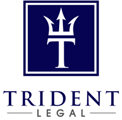The Paycheck Protection Program is CLOSED
UPDATE 4/17/20 The PPP funds have been exhausted and the SBA is no longer processing loans.
This is an overview of the Paycheck Protection Program. This does not qualify as financial or legal advice. You will want to clarify specific terms with your lender and / or lawyer.
 Small Businesses – Getting Your Share of the Stimulus Package: The Paycheck Protection Program
Small Businesses – Getting Your Share of the Stimulus Package: The Paycheck Protection Program
 Small Businesses – Getting Your Share of the Stimulus Package: The Paycheck Protection Program
Small Businesses – Getting Your Share of the Stimulus Package: The Paycheck Protection Program
- What is the Paycheck Protection Program?
- On March 27, 2020 the Coronavirus Aid, Relief and Economic Security Act (CARES Act) was signed into order.
- The CARES Act established a $2.2 trillion stimulus package and authorized $349 billion to provide loans administered through the Small Business Administration 7(a) program, the Paycheck Protection Program.
- Who qualifies to apply?
- Any small business who has less than 500 employees located in any state or territory (there are a few additional qualifications to check if you are larger). This includes 1099 independent contractors, self-employed individuals, gig economy workers and sole proprietors.
- How do I apply?
- You apply directly through a local SBA lender. If you are having trouble finding someone the SBA has a Lender Match tool or check this list of SBA approved lenders in Massachusetts.
- The deadline in June 30, 2020, but you should apply ASAP! It is free to apply.
- What is the Covered Period?
- Small business owners with their lender select an 8-week period between February 15, 2020 and June 30, 2020 (the “Covered Period”). The Covered Period begins upon the date when the loan originates.
- How much can I get?
- A business can qualify for up to 2.5 times its monthly payroll with the maximum amount of $10 million per business during the Covered Period.
- Seasonal businesses will be measured using a 12-week period beginning February 15, 2019 or March 1, 2019, whichever the seasonal employers select.
- What are the payment terms?
- Payment terms will be specific to you and your lender.
- Loans are eligible for forgiveness, but with any unforgiven portion repayable after 10 years;
- interest shall be capped at 4%;
- there should be no pre-payment penalty or fees on the loan; and
- payments will be deferred at least 6 months.
- What expenses are “forgivable”?
- The amount of principal that can be forgiven is for expenses relating to payroll (not to exceed $100,000 salary) and other compensation, employee health care, interest payments on mortgages, rent and lease payments and utility services agreements.
- The funds can be used for other business expenses but that portion of the loan with be subject to the agreed upon lending terms.
- What if we’ve already laid of employees?
- If you lay employees off or reduce salaries during the Covered Period the forgivable amount of the loan will be reduced proportionally.
- However, if all employees are rehired and salaries are restored by June 30th then there will be no reduction of the loan.
- Do I have to personally guarantee the loan?
- No, the personal guarantee requirement has been waived. You must provide a good faith certification that your business has been affected and that the funds will be used according to the guidelines.
- Can I apply for the Paycheck Protection Program and an SBA Disaster Loan?
- Yes, though you can’t apply for a disaster loan for the same purpose as the Paycheck Protection Program. Here is more information with regard to applying for an SBA Disaster Loan.
Law Services
Contact Us
2 Hawthorne Place,
Unit 12P Boston,
MA 02114
(617)695-0009
Copyright © 2022, Trident Legal LLC, all rights reserved.
